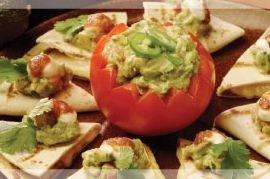Latino consumers can’t be defined by a single lens: study

With designated market areas Charlotte/Raleigh, NC; Atlanta, GA; Orlando; and Fort Meyers, FL on track to mirror the Latino population growth seen in the top five Designated Market Areas (Los Angeles, Houston, Miami, Chicago and New York), it’s only a matter of time before one of these areas becomes a major population center for Latinos, according to Nielsen.
In order to more effectively reach the Latino consumer, manufacturers must look beyond traditional acculturation models and see Hispanics as multicultural consumers, according to a joint study from brand marketing companies the Hartman Group and MSLGroup, in conjunction with the Hispanic Public Relations Association (HPRA).
More traditional, linear models of acculturation show minority groups increasingly adopting the values and activities of their home country with each generation through factors such as language, media consumption, years in the US and overall cultural identification. The multicultural lens focuses on the convergence of three key influencers: country of residence, globalization and country of origin, which “maps the story in more detail,” said Davey McHenry, director of client engagement at The Hartman Group, during a press call to present the study. “Americans cannot be defined by a single lens.”
The two-phase study, entitled “Charting a course for understanding: The multicultural Latino consumer,” consisted of qualitative and quantitative research collected through multiple interviews and a national online survey of 1,283 adults of Latino origin and 413 non-Latino adults in early 2013. About half (47%) of the participants identified themselves as bicultural, 31% as acculturated and 22% as unacculturated.
US media makes Latinos more skeptical of packaged foods
Latinos tend to take a more holistic approach to health and wellness, emphasizing fresh, organic foods, using food as medicine and listening to one’s body over seeing a doctor. But exposure to US media makes them more attune to the physical aspects of health … and more skeptical of the foods they eat.
Fifty-three percent of Latinos surveyed said they are concerned about weight management. Acculturated Latinos also feel more of a need to read labels, the study found.
“Many Americans won’t accept products at face value,” said McHenry. “For Latinos, trust is a highly regarded value. But as they are more acculturated, they become more skeptical and feel a greater need to read labels to ensure they’re getting what they need.”
Family remains the focus
Overall, Latinos prefer whole foods, with 82% saying they would choose fresh foods over packaged, and 63% reporting that they bought organic food and beverages some time in the last three months. (The study found that the treatment of the ingredients is typically what makes the end product unhealthy.) Flavor, experience and eating with family and friends all trump health, which can be attributed in large part to the emphasis on family and the use of cooking to express love.
“Frozen products don’t have a lot of penetration in the Latino market because they don’t take time to prepare,” said Allande-Fite. “Traditional dishes like tamales are not complex, but they require a lot of steps, which demonstrates a commit to the family moment.”
The power of the tienda
On average, Latinos spend about $566 per month on groceries. Because American stores and brands can be found throughout most Latinos’ countries of origin, they shop in nearly all of the retail options available, though their usage rates are higher at Walmart, Target, warehouse club chains, dollar stores, convenience stores and Latino stores, also known as tiendas.
Latinos have diverse pantries representing the convergence of country of origin, the US and globalization: fresh, homemade foods represent their countries of origin; convenient, brand-name packaged food products represent American constraints; and global ingredients represent their culinary experiments with new flavors, the study found.
“When we looked in the participants’ pantries, we found a combination of things like fresh tortillas, canned tomato sauce and hummus—Latinos pull from their heritage, home and the world to create their pantries,” McHenry said.
Most Latinos are indifferent to the Hispanic foods aisle in the grocery store, which they consider to be more of a smattering of Americanized Hispanic products than representative of Hispanic foods. For authentic and fresh Hispanic foods, even acculturated Latinos still prefer shopping at the tienda, independently owned grocery stores with strong emotional and cultural significance for Latinos.
“Tiendas are places of respect where the common language is Spanish,” McHenry said. “The tienda serves as an excellent resource to those wanting to stay rooted in their heritage. More acculturated Latinos visit the tienda less often, but it maintains its cultural significance for them.”
The study pointed out that regional chains like Fiesta Mart are getting it right by focusing on specialty products from around the globe at affordable prices. In addition, placing Latino products right next to American products—as opposed to having dedicated international aisles—resonates well with Latino consumers who would otherwise bypass the “Latino shelf,” McHenry added.
General Mills hits the sweet spot with heart disease campaign
HPRA presented a case study of successful Latino consumer outreach with General Mills’ Honey Nut Cheerios. Understanding that heart disease is one of the main causes of death in the Hispanic community, Honey Nut Cheerios leveraged its “Sabroso y Saludable” platform to educate the Latino audience on its heart-health benefits.
Knowing that 43% of US Hispanics watch telenovelas (soap operas), the brand secured a well-known telenovela spokesperson that resonated with US Latinas and launched a sweepstakes for the chance to win breakfast with the soap opera star. The contest received 155 media placements reaching nearly 35 million consumers, and had 90% message inclusion. More than 4,800 consumers entered.
“They tied the contest in with a culturally relevant health issue, knowing they could get some interest among the Latino community,” said Stephen Chavez, president-elect of HPRA. “Then they connected with a celebrity that resonates well with Latina moms. It was a hugely successful campaign.”










